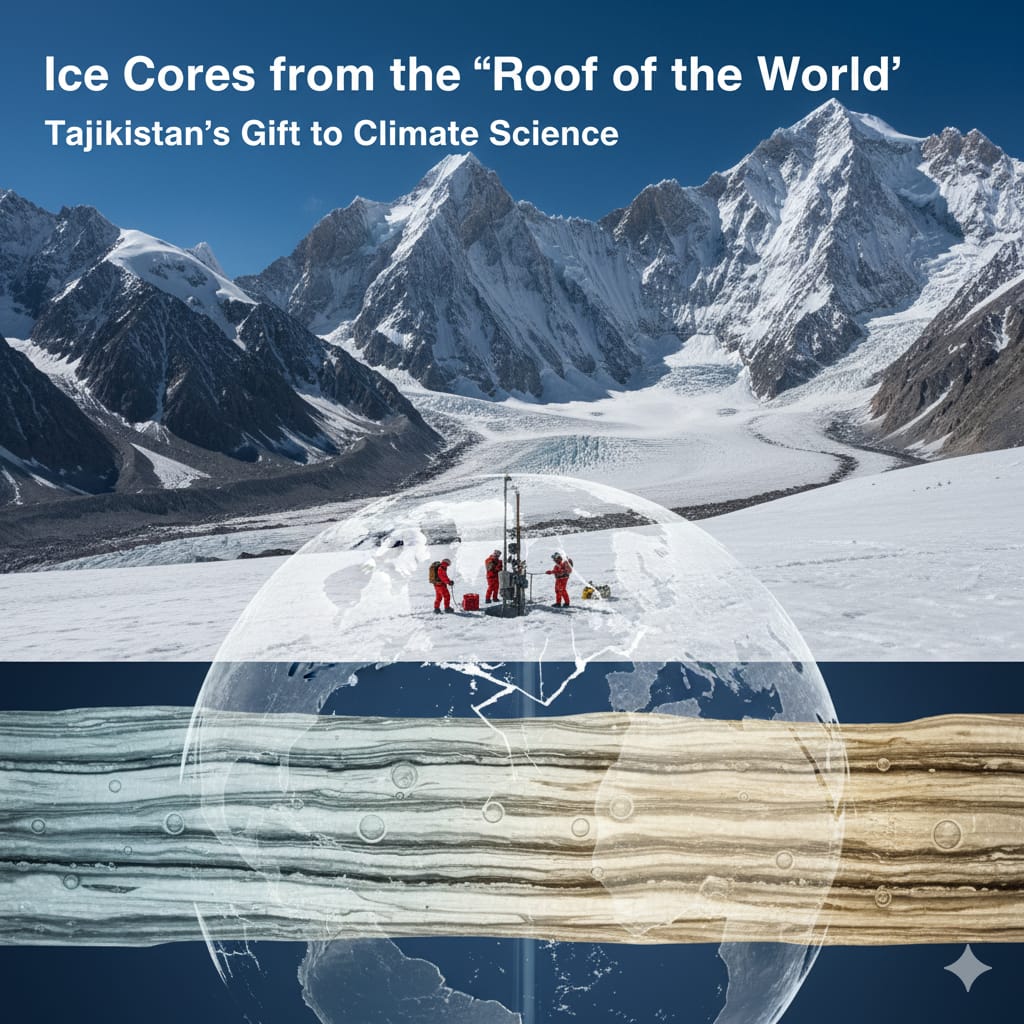
Understanding the critical importance of international scientific cooperation, Tajikistan has donated a collection of invaluable ice cores to the global climate research community. These frozen cylinders, extracted from the high-altitude glaciers of the Pamir Mountains, often called the "Roof of the World", represent a unique, preserved record of the Earth’s climate history and potentially stretching back hundreds of millennia.
The ice cores were retrieved from the Kon Chukurirbashi ice cap, located at a staggering altitude of 5,800 metres above sea level. It was the first-ever deep ice core retrieval by a team from Tajikistan, conducted as part of the country’s Pamir Research Programme and the Ice Memory Sanctuary initiative. The cores were successfully recovered from a depth of around 105 metres, bringing with them an unprecedented archive of past atmospheric conditions.
A Vertical Library of Climate History
Ice cores are often described as vertical time capsules. As snow falls, it compresses over thousands of years into glacial ice, trapping air bubbles, dust, pollen, and even volcanic ash in its layers. Scientists can read these layers like the pages of a book, using the trapped components to reconstruct a detailed history of the planet’s atmosphere, temperature, and even major environmental events.
The Kon Chukurirbashi cores are particularly significant due to their age and location. Preliminary scientific estimates suggest that the oldest ice contained within these cores could be between 500,000 and 800,000 years old. Such a vast timescale offers scientists a window into multiple glacial and interglacial cycles, providing crucial context for understanding current rapid climate change. The information held in this ancient ice is expected to hold at least 700 years of climate, environmental, and ice melt variations.
The extraction was a complex logistical feat, carried out by a team of scientists from Tajikistan, a partner in the Pamir Research Programme, in collaboration with the Pamir Research Consortium (PAMCIR). The successful retrieval on September 24th marked a new chapter for climate research in Central Asia.
Securing the Archive for Future Generations
The donation is a proactive measure driven by the accelerating threat of global warming. Glaciers across the world, and particularly those in the Pamir region, are melting at an alarming rate. As the ice melts, the precious climate data they hold is permanently lost. This impending loss is the driving force behind the Ice Memory Sanctuary, an international project that aims to secure and preserve ice cores for future generations of scientists who will have more advanced analytical tools.
The donated ice cores are slated to be shipped to Japan and Antarctica for long-term preservation. Antarctica is home to the Ice Memory Sanctuary, which is protected and maintained by the governments of Italy and France. This sanctuary acts as a global “backup hard drive” for Earth’s critical climate records. While the Kon Chukurirbashi ice cap remains relatively stable for now, according to a recent study in Nature Communications, this preservation effort acknowledges the growing vulnerability of all high-altitude glaciers.
The Melting Challenge in the Pamirs
The study, which examined the Kon Chukurirbashi ice cap, offered a rare piece of slightly better news amid a broader trend of glacial retreat. It indicated that snowmelt shortages are not yet destabilizing some of the world's most vulnerable ice masses, particularly in this remote area. However, glaciologists emphasize that this is a temporary reprieve. Many glaciers in the Pamir Mountains of Tajikistan are already melting rapidly in the face of global warming, and scientists in the region stress the urgent need to continue monitoring and extraction efforts.
The new data from Tajikistan will be crucial for refining global climate models. Although the Pamirs' glaciers have been deemed less susceptible to climate change than other ranges, they remain vulnerable. Scientists warn that if current trends continue, the long-term risk of a "flash flood" of ice melt and an eventual complete loss of these vital records within a few decades remains a stark possibility.
The transfer of the Kon Chukurirbashi cores, which will be available to the international community for research, is a powerful contribution to the global effort to understand and combat climate change. It represents a commitment by Tajikistan to share its invaluable natural heritage—the frozen history of its mountains—in the service of all humanity. We hope that this ancient ice, preserved at the ends of the Earth, will provide the critical knowledge needed to safeguard the planet's future.







.jpeg)


.jpeg)




.jpeg)




